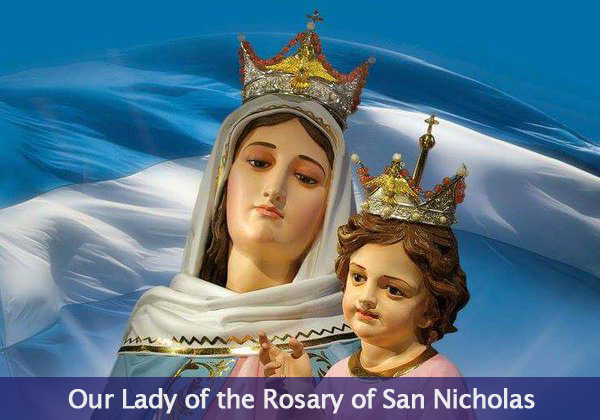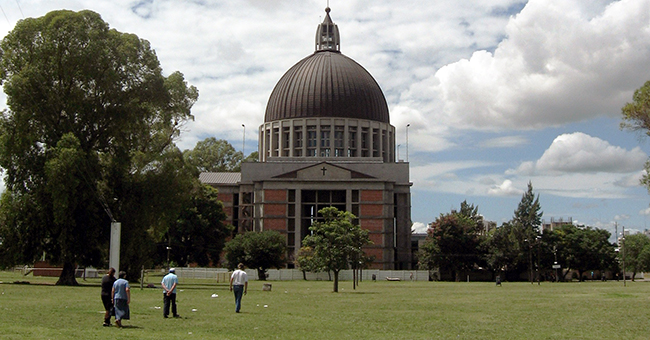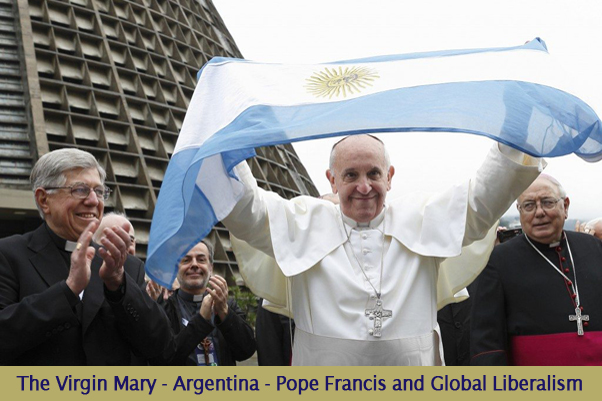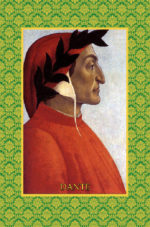THE CATHOLIC CHURCH IS THE WORLD’S largest religion present in nearly every country of the world, despite what statistical yearbooks say about Islam having more adherents. Those year books often fail to divide Sunni, Shiite and Sufi Muslims, but count them as one body. If Roman Catholics were united with Greek Orthodox and Protestants, the number of Christians would exceed the number of Muslims. When this is done, there are 2.1 billion Christians and 1.3 billion adherents of Islam.
To make an even more detailed and proper comparison, the largest Christian denomination, Roman Catholicism, should be compared to the largest largest Islamic denomination, Sunnism. When that is done, as it should be if there is to be actually objective data, the Roman Catholic Church is the largest:. According to the PEW Research Center:
“Of the total Muslim population, 10-13% are Shia Muslims and 87-90% are Sunni Muslims.”
Thus, at a maximum there are 1.13 – 1.17 billion Sunnis Muslims in the world. According to Religion Facts, there are less than 1.13 billion Sunnis:
“With 940 million adherents out of about 1.1 billion Muslims, Sunni Islam is the largest Islamic sect. (Shia Muslims make up about 10% of all Muslims worldwide.)
The “Annuario Pontificio 2016,” released by the Vatican Statistics Office announced that:
“The number of baptized Catholics reached 1.27 billion or 17.8 percent of the global population.” (National Catholic Reporter).
According to the BBC, there are less than 1.27 billion Catholics: “There are an estimated 1.2 billion Roman Catholics in the world.”
Either way, with approximately 1.2 – 1.27 billion Roman Catholics, the Roman Catholic Church is the largest in the world as Jesus said that it would be:
“To what shall we liken the kingdom of God? or to what parable shall we compare it? It is as a grain of mustard seed: which when it is sown in the earth, is less than all the seeds that are in the earth: And when it is sown, it groweth up, and becometh greater than all herbs, and shooteth out great branches, so that the birds of the air may dwell under the shadow thereof” (Mark 4: 30-32).
With a body this large, it is nearly impossible to keep an eye on everything that is occurring day to day throughout the world. However, there has been an unusually large amount of news coming out of Latin America lately. The election of Pope Francis as supreme pontiff of the Roman Catholic Church ranks toward the top of the list. The Holy Spirit blows where He wills shaping the global climate from age to age.
During the pontificate of Pope John Paul II, the nations of the world focused on the cold war being fought between East and West, between Communism and Capitalism. As that battle reached a crescendo, Karol Wojtyla was called out of Communist Poland to lead the Church in Her definitive hour against Athesitic Communism. Pope John Paul II knew better than any how to posture the Church vis a vis the many headed behemoth controlled by neighboring Kremlin Apparatchik and Politburo members. He adopted the diplomatic posture known as “Ostpolitik” bending and acquiescing wherever he could while standing firm in those few doctrinal areas where he must until such time as the Church could weather the storm and be in a better position to advance the Gospel and build the Kingdom of God?
Pope Francis is also called at a particular time and from a particular place to give emphasis to a particular manifestation of the Holy Spirit in the third millennium. The pope sees himself as an Argentine:
“For me, the people of Argentina are my people, you are important.” “I continue to be an Argentine, and I still travel with an Argentine passport. I am convinced that the people are the biggest treasure of our homeland…a people who know solidarity, know how to walk with one another, know how to help, respect,” and don’t take a step back. “I respect, love and carry (those people) in my heart.” (Catholic News Service).
SO WHY HAS THE HOLY SPIRIT CALLED A POPE OUT OF ARGENTINA?
First, there has been an approved apparition of Our Lady there, Our Lady of the Rosary of San Nicolas. On Holy Trinity Sunday, May 22, 2016, The local bishop, Hector Cardelli, approved a series of apparitions that began with the rediscovery of a lost statue of the Virgin Mary and glowing rosaries. The bishop has proclaimed that the apparitions are of supernatural origin and worthy of belief. Read his announcement in English and Spanish.
According to Bishop Cardelli”
“In my twelfth year of pastoring San Nicolas and, having followed with faith and responsibility the Marian events that I have known about since the very beginning, I have reached the decision to recognize them for my diocese.”
“I recognize the supernatural nature of the happy events with which God through his beloved daughter, Jesus through his Most Holy Mother, the Holy Spirit through his beloved spouse, has desired to lovingly manifest himself in our diocese.”
“On the occasion of the Jubilee of Mercy of the pilgrims from the Diocese, I announce this valid decision for the flock which I guide and accompany with it the presentation of a book entitled “SPIRITUAL SCHOOL OF SANTA MARIA DEL ROSARIO DE SAN NICOLAS” highlighting the most important teachings in the messages she gives us for our commitment to everything he tells us because he is the culmination of revelation.
Bishop Cardelli spoke about the apparitions with Pope Francis when the Argentine pontiff was the archbishop of Buenos Aires, and the future pope approved of his confirming them.
 The apparitions began in Buenos Aires after rosaries began to glow in homes throughout San Nicolas de los Arroyos.
The apparitions began in Buenos Aires after rosaries began to glow in homes throughout San Nicolas de los Arroyos.
On September 25, 1983 The Virgin Mary carrying the infant Jesus and wearing a blue gown and veil appeared (but did not speak a word) to a simple elementary 4th grade educated housewife and mother of two named Gladys Quiroga de Motta, now 80 years of age.
The Holy Mother spoke for the first time on Oct. 13, anniversary of the last Fatima apparition. “Do not be afraid,” She said. She gave Gladys a Bible reference: Ezekiel 2:4-10.
On October 25, the Virgin Mary appeared to Gladys while she was praying in the Cathedral in a town named Rosario. The Blessed Mother handed her a white rosary while saying:
“Receive this Rosary from my hands and keep it forever and ever. You are obedient; I am happy because of it. Rejoice, for God is with you.”
The Virgin Mary asked Gladys to search the church for a forgotten statue that had been blessed by Pope Leo XII. On November 27, 1983, Gladys found the statue of the Virgin Mary holding the child Jesus in the belfry of the cathedral where it had been placed after being damaged in 1894. Gladys recognized the statue because it resembled the Virgin Mary in the apparitions. Behind the picture were a stained glass window with the Holy Trinity and angels.
On Palm Sunday, 1989, Bishop Castagna relocated the statue from the cathedral to the new Sanctuary of Mary of the Rosary of San Nicolás, which She had requested to be built.

Sanctuary of Our Lady of the Rosary of San Nicholas – Province of Buenos Aires, Argentina
Gladys has reportedly received stigmata on her wrists, feet, side and shoulder. The many messages she received from Jesus and Mary include topics of penance, peace, return to the sacraments and love of God
“Many hearts do not accept my invitation to prayer and to conversion. That is why the work of the devil is growing and expanding.”
“It is up to you to set your eyes and your heart on God.”
“I want to cure my children from this illness which is materialism; an illness which makes many suffer. I want to help them discover Christ, and I want to make it known to them that Christ prevails over everything.”
Jesus told Gladys:
“If this generation will not listen to my mother, it will perish. I ask everyone to listen to her. Man’s conversion is necessary.”
“Today I warn the world, for the world is not aware: souls are in danger….My mother must be accepted. My mother must be heard in the totality of her messages. The world must discover the richness she brings to Christians.”
“ I want a renewal of the spirit, a detachment from death, and an attachment to life. I have chosen the heart of my mother, so that what I ask will be achieved. Souls will come to me through the means of her Immaculate Heart.”
Other important messages include:
- “The demon acts ferociously, do not be astonished. He attacks without compassion surrounding everything what he can touch. Pray my children, prayer fortifies. You are called by Jesus Christ to pray. The prince of evil spills today his poison with all the forces, because he sees that he is concluding his sad reign. He has little left, his end is near.”
- “In these times in which the poison of the evil one seems to contaminate everything, the Lord becomes evident for the salvation of souls.”
- The enemy is defying me very ruthlessly, is openly tempting my children. It is a fight between the light and the darkness. It is a constant persecution to my dear Church.
- “It is in fact this time, a precious time that does not have to be wasted but to be taken advantage of. The Redeemer is offering to the world the way to face the death that is Satan; is offering as He did from the Cross, His Mother, mediator of all grace.”
- “The soul must unite itself to Christ each day, and for that, there is nothing better than Holy Communion: the Food of the soul for life.”
Gladys received many of these apparitions in the Cathedral at Rosario, which is the object of hatred captured in an article entitled “Feminist Protestors Assault Catholic Cathedral in Argentina” portrayed in the following video:
In times such as these when liberalism is experiencing its last hurrah and spewing its fury at the Church, Jesus refers all Christians to His Mother whom He refers to as “my Ark.” He said:
“In the past, the world was saved by the Ark of Noah. Today my mother is the Ark. It is through her, that souls will be saved, because she will lead them to me. He who rejects my mother, rejects me.”
Mary spoke several times about a coming victory, it will not come without a spiritual struggle, but “Jesus Christ will win the great battle, my child…” Blessed are those who make reparation for the grave offences which my Son receives.
Finally, Jesus said: “My Heart wishes the salvation of all souls and loves them, even those who are in sin.”
Although it is easy to get angry and demand justice for such gross violations and sacrileges, the message here is not anger and hatred but, as at Fatima, REPARATION and, as with Divine Mercy, LOVE and COMPASSION, which is the message of Pope Francis. Those men (and women) being spit upon are praying the rosary, and since it is at the cathedral where Our Lady appeared as Our Lady of the Rosary, they are presumably making reparation for those spitting upon them. Reparation means to make up by your own good deeds for the evils committed by others, especially those committed against God such as the blasphemies, outrages, and sacrileges committed by these radical feminists lost in hatred and shouting slogans such as:
CRUX also reports that:
“Several dozen of the Oct. 7-10 workshop participants had gathered in front of the Cathedral of Our Lady of the Rosary and staged a parody, which included topless women dancing around a man dressed as Pope Francis while they sang for the legalization of abortion.”
On the contrary,
Argentina’s Constitution does not allow for abortion; it was strengthened in 1994 by a series of international agreements such as the Pact of San José that declares a right to life, “from the moment of conception.” In 1995, Argentine President Carlos Menem marked the Annunciation, March 25, as the “Day of the Unborn Child.” Under Menem, Argentina announced its complete rejection of abortion and contraception and declared that the defense of life was a “priority of Argentina’s foreign policy.”
With the election of Nestor Kirchner in 2003, relations between Church and state were somewhat strained as Kirchner’s administration clashed with the Church over abortion, sex education, and contraception. In 2007, Kirchner was succeeded by his wife Cristina who, like her husband, supported a host of left-wing moral issues including same-sex marriage, which was legalized in 2010 leading to massive protests spearheaded by Catholic and Protestant evangelical groups. At that time Pope Francis was the Archbishop of Buenos Aires. In this position, he called on legislators to opposes the bill referring to it as “a move by the father of lies to confuse and deceive the children of God“ (sound like a liberal pope to you?).
The Archbishop also came out against same sex marriage.:
“According to an article in…L’Osservatore Romano, Cardinal Jorge Mario Bergoglio, the Archbishop of Buenos Aires and Primate of Argentina, has said that if a proposed bill giving same-sex couples the opportunity to marry and adopt children should be approved, it will ‘seriously damage the family.’”
At stake, he stated is
“… the identity and survival of the family: father, mother and children. At stake are the lives of many children who will be discriminated against in advance, and deprived of their human development given by a father and a mother and willed by God. At stake is the total rejection of God’s law engraved in our hearts.”
To fight the bill, he called on the nation’s Carmelites for “their prayers and sacrifice, the two invincible weapons of Santa Teresa.” (Does it get more conservative than this?)
In spite of the Kirchner battles, ties between the Catholic Church and Argentine state have remained quite strong.
lo
SO WHY ARGENTINA
In addition to a highly relevant apparition of Our Lady for our time, another reason Argentina is a place to watch is its confrontation with neo-liberalism. Will Argentina be for Latin America what Poland was for Eastern Europe? That is, can Argentina be the vanguard against the many headed behemoth of liberalism controlled by Washington neo-cons and neo-liberals that Poland was against the behemoth of Muscovite Communism, and will Pope Francis and the Virgin Mary have some unique role to play as did the Virgin Mary and Pope John Paul II, until such time as the Church can weather the storm and be in a better position to advance the Gospel and build the Kingdom of God.
jk
ARGENTINA SINCE 2010
Today Argentina is experiencing a populist resurgence that is eroding liberal democratic institutions in search of a new way toward the future. Scenes as those in the above video, serve only to reinforce national Catholic values and increase disdain for liberalism much as the so-called Trump-Effect is having in America. In Argentina, as elsewhere in Latin America, Argentines are
“…defining a chosen “enemy of the people” (businessmen, foreign and domestic – but especially foreign; the pantomime-devils of the International Monetary Fund and World Bank.”
Argentina also has a new president, Mauricio Macri, leader of the coalition “Let’s Change”. Macri was elected in November 2015. Although identified as a pro-market conservative, the political ramifications of this brand of conservatism
“…escapes the analytical simplifications suggesting a straightforward ‘conservative restoration,’ or a return to the ‘old’ 1990s’ neoliberalism. There is, no doubt, the birth of a new 21st Century’s Right-wing politics in Argentina, as well as in Latin America more generally, electorally competitive and which the nature of Right-wing politics is yet unfolding” (International Policy Digest).
In short, Argentina is experiencing a climate of change away from neo-liberalsim and intent on retaining its Catholic patrimony. (92% of Argintines are Catholic; Argentina has seven Catholic universities and hundreds of elementary and secondary schools funded by the government.
Thus, in September 2010, “thousands of (liberal) Argentines marched in Buenos Aires to protest the perceived corporate structure of the state and its corrupt ties with business interests, the military, and the Catholic Church. The march’s organizer, university professor and political activist Luis D’Elía, proclaimed it “a disgrace that Catholic schools received state subsidies.”
Note: “Historically, the Argentine church has positioned itself as a non-partisan political advocate, clashing with the government over education, marriage and sexual issues. Tension between church and state reached a high point during the government of Juan Perón, who intervened in religious schools and tried to legalise divorce and prostitution. Many of Perón’s supporters suspected the church’s hand in the 1955 coup that toppled him, which was carried out mostly by staunchly Catholic military officers” (The Economist).
Argentina, is now undergoing a bout with neo-conservatism and neo-liberalism (the World Bank and IMF) that might spearhead change throughout Latin America. Will Argentinians play a role vis a vis liberalism that Poles played vis a vis Communism or will they contribute to the Church in some other way being revealed in the pontificate of Pope Francis?








Awesome blog! Do you have any tips for aspiring writers?
I’m hoping to start my own site soon but I’m a little lost
on everything. Would you advise starting with a
free platform like WordPress or go for a paid option? There are so many choices out
there that I’m totally overwhelmed .. Any tips?
Thanks!